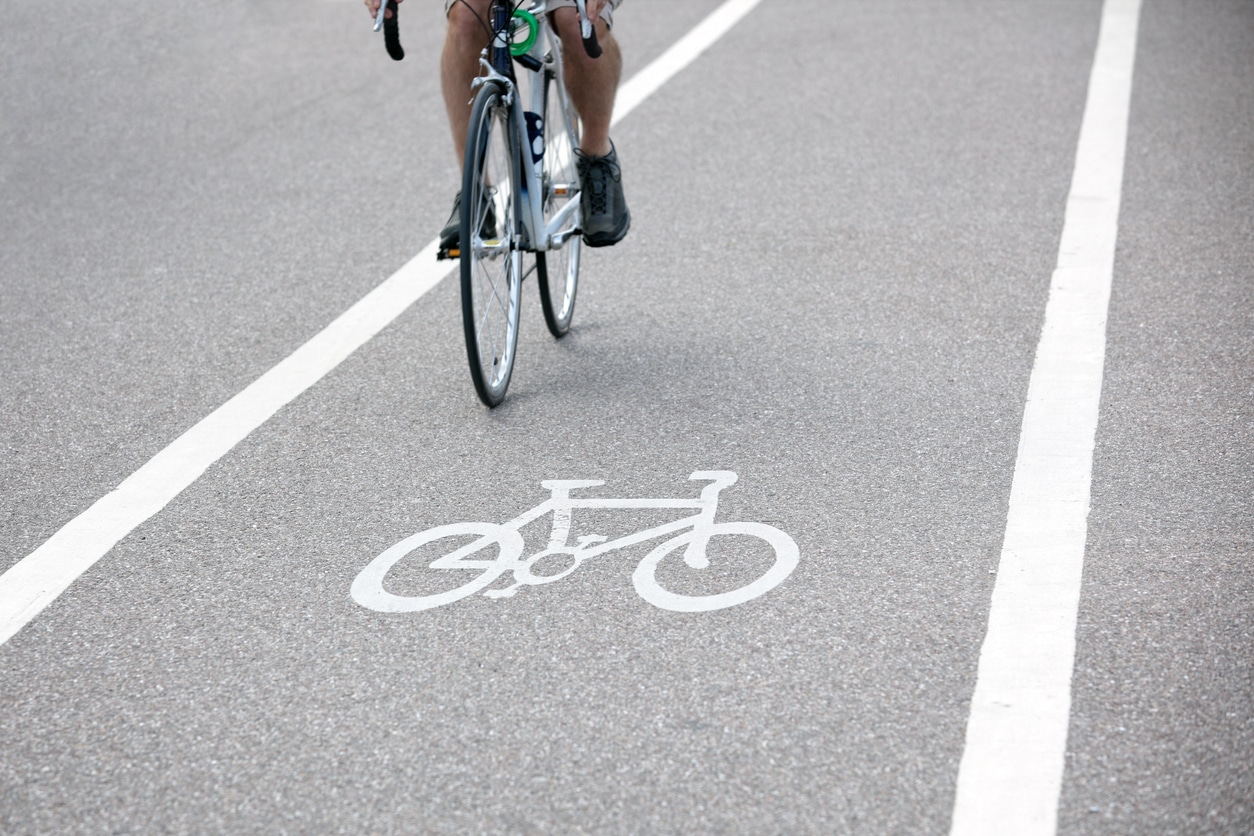Thousands of bicyclists are injured or killed each year in the United States. Seventy-nine percent of the cyclists killed in 2018 in motor vehicle accidents were in urban areas. Cities throughout the country are working to decrease the number of injuries and fatalities on their roads.
Integrating motor vehicles, pedestrians, bicyclists, mass transit, and scooters requires an excellent road infrastructure plan. Multi-modal cities are incorporating complete streets into their infrastructure plans to meet the needs and protect everyone who uses the roads.
Complete streets are accessible for all vehicles and pedestrians. The streets’ design makes it possible for bicyclists, pedestrians, and all vehicles to share the road without increasing the risk of accidents and injuries. Because an area and the traffic within that area are unique, there is no standard design used for all complete streets.
A complete street’s design is based on the needs within a particular area. Bikeways and bicycle infrastructure are an important consideration when designing a complete street.
Types of Bikeways Utilized in Complete Street Designs
Bikeways are lanes or paths used by bicyclists. When designing bicycle infrastructure for complete streets, engineers and planners may choose from a variety of bikeways.
Examples of bikeways that designers may use include:
Shared Use Bicycle Routes
Some roads may be shared by motor vehicles and bicycles. There is not a designated lane for the bicyclist to ride.
Often, designers paint arrows on the road with a bicycle to indicate that motorists and bicyclists share the road. There may also be traffic signs to indicate the road is a shared road.
Conventional Bicycle Lanes
Conventional bicycle lanes are areas between traffic and a sidewalk or parking area. The bicycle lane travels in the same direction as traffic. The lanes may be painted and are marked with bicycle symbols.
Protected Bicycle Lanes
Protected bicycle lanes have a physical buffer between the bicyclists and motor vehicles. The bikeway may be separated by shrubs, medians, curbs, or other items. In most cases, the buffer is short enough for drivers and cyclists to maintain visibility between the bikeway and the roadway.
Painted Buffer Lanes
Painted buffer lanes are areas marked with lines and signs that indicate motor vehicles may not drive in the area or enter the area. It is a buffer between automobiles and bicyclists. Buffer lanes can reduce the risk of bicycle accidents by giving cyclists more room, instead of placing them in a small area between cars and a sidewalk or parked vehicles.
Contraflow Bicycle Lanes
Contraflow bicycle lanes travel in both directions and are often used for one-way roads. Cyclists may be moving in the opposite direction of motor vehicles using the same street. Contraflow lanes usually put the bicyclists moving in the opposite direction of traffic on the side of the bicycle lane that is further away from traffic.
Off-Street Bicycle Paths
These bikeways do not share a roadway with motor vehicles. Off-street bicycle paths are often used to provide vehicle-free forms of transportation through parks and other off-road areas. They may connect with bikeways at various points along the route to allow bicyclists easy on and off access from the road.
Other Ways to Protect Bicyclists by Utilizing Infrastructure
Planners and engineers can protect bicyclists from motor vehicle accidents in other ways. For example, the use of speed bumps, raised curb extensions (neckdowns), chicanes, and other traffic calming methods can reduce speed along streets shared by motorists and bicyclists.
Redesigning intersections for better management of traffic flow can also help protect riders. Over one-half of bicycle injuries and almost one-third of bicycle deaths occur at intersections. Some of the ways designers can manage traffic at intersections include:
- Adding bicycle signaling
- Prohibiting right turns on red lights
- Adding advanced stop lanes to create space for bicycles to stop in front of vehicles to increase visibility
In some cities, tunnels are being used to connect bicycle routes and move bicyclists below fast-moving motor vehicles.
Designing for All Ages and Abilities
When designing bicycle infrastructure, it is also vital to design bikeways and areas that consider all ages and abilities of riders. Some areas may have more children riding bicycles. Those areas may require buffers to increase the distance between vehicles and young riders.
In other areas, bicyclists may use different modified bicycles because of a disabling condition. Planners need to be aware of this fact when designing bikeways to ensure the bikeways can accommodate all types of cyclists.
With adequate planning and cooperation from various agencies, cities can design a bicycle infrastructure that reduces the number of bicycle accidents.


Leave A Comment